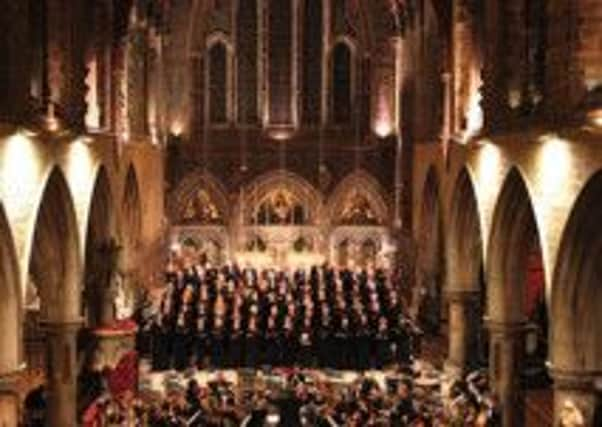‘Opulent’ and ‘wonderful’ concert raised the praise


The splendid surroundings of Christ Church, surely one of the most opulent venues in Hastings/St. Leonards, provided a wonderful backdrop to the evening of choral music we were treated to last Saturday. It was a very well attended performance with some unexpectedly entertaining compering from the pulpit.
Vivaldi’s ‘Gloria’, believed to have been written circa 1715 for the girl’s choir at the Ospedale’s orphanage, is a joyful and uplifting piece. It’s a significant Baroque work and is unusual in that it’s scored for two female soloists – quite controversial for the time.
Advertisement
Hide AdAdvertisement
Hide AdThe text is taken from the Catholic mass and is divided into twelve sections accompanied by strings and woodwind. Battle Choral Society, some eighty voices strong led by their conductor John Langridge, was an impressive sight and from their first ‘Gloria’ the audience was gripped. Emily Steventon, Soprano and Angharad Lyddon, Mezzo made a bold statement with their first duet ‘Laudamus te’ and although very different in timbre their voices blended and projected superbly.
It’s difficult to sing the whole work off-copy but perhaps a little more eye contact with the audience would have helped communicate more of a sense of joy. The ‘Domine Deus’ Soprano and oboe duet was very nicely played and ‘Cum Sancto Spiritu’ had strong attack from the choir even if the fugue itself could have been sharper in that particular acoustic. The rousing ‘Amen’ ended the first half on a strong note.
We then enjoyed Rossini’s ‘Petite Messe Solennelle’, a grander work written in 1863 towards the end of his career – he described it as “the last of my péchés de vieillesse” (sins of old age).
The piece itself is the antithesis of the title in that it is neither ‘Petite’ nor ‘Solennelle’, employing four soloists and a larger orchestra with full brass section, percussion and harp. The opening ‘Kyrie’ was powerful and well articulated, particularly from the basses, and set a suitably dramatic mood.
Advertisement
Hide AdAdvertisement
Hide AdThe choir held their tuning impressively in the unaccompanied ‘Christe’ section. Matthew Moss, Tenor gave a lyrical and assured rendition of ‘Domine Deus’, which was followed by a stunning duet ‘Qui tollis’ from Emily and Angharad with the harp adding an ethereal quality. ‘Quoniam’ featured the bass baritone of Terence Ayebare, which had a very distinctive quality although sometimes his lower register was slightly overpowered by the orchestra.
The four voices augmented the choir in ‘Cum Sancto’ which was a tour de force led with great energy from the podium by John Langridge who at one point emphasised his down-beat with a leap in the air. Part 2 gave us some beautiful animated singing from Emily in ‘Crucifixus’ and ‘O Salutaris’ which captivated the audience.
Although there were some lower-string tuning issues in ‘Preludio religioso’ it didn’t detract from the overall excellent playing from the orchestra admirably led by Pat Beaumont.
There was some lovely interaction between the soloists and the choir in ‘Sanctus’ and the closing ‘Agnus Dei’ sung by Angharad showed off her use of chest-voice to great effect and brought the evening to a thrilling close.